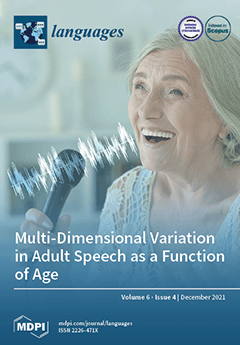Students have been found to improve their sociolinguistic competence, particularly regarding the acquisition of dialectal features, while studying abroad. Nevertheless, most of the research on learner development of morphosyntactic features in Spanish-speaking immersion contexts has examined that of variants characteristic of Peninsular Spanish
[...] Read more.
Students have been found to improve their sociolinguistic competence, particularly regarding the acquisition of dialectal features, while studying abroad. Nevertheless, most of the research on learner development of morphosyntactic features in Spanish-speaking immersion contexts has examined that of variants characteristic of Peninsular Spanish in Spain, namely clitics and the informal second-person plural
vosotros. Since the informal second-person singular,
vos, is more prevalent than its equivalent,
tú, in several Latin American countries, learner acquisition of this feature also merits investigation. This article explores second-language learner production of
vos among 23 English speakers during a 5-month semester in Buenos Aires, Argentina, a popular study abroad destination. The findings from the multivariate analysis of over 1200 tokens of
tú and
vos indicate that learners used
vos verb forms over 70% of the time by the end of the sojourn. Factors including social networks, proficiency level, mood, and task significantly influenced this use. Most notably, the stronger the learners’ social networks, the more they used
vos verb forms and learners with high proficiency levels used these forms more than lower-proficiency learners. This study provides one of the first accounts of the acquisition of a widespread morphosyntactic feature of Latin American Spanish.
Full article





